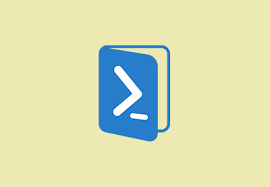Contents
When working with the FileSystem provider in PowerShell, you can navigate, manipulate, and perform various operations on files and directories using familiar commands. Here are some common tasks and commands you can use with the FileSystem provider:
- Navigation:
# Change to a specific directory
Set-Location C:\Path\To\Directory
# Navigate to the parent directory
Set-Location ..
# Navigate to the root of a drive
Set-Location C:\- Listing files and directories:
# List all files in the current directory
Get-ChildItem
# List files with a specific extension
Get-ChildItem *.txt
# List only directories
Get-ChildItem -Directory- Creating files and directories:
# Create a new empty file
New-Item -ItemType File -Path C:\Path\To\File.txt
# Create a new directory
New-Item -ItemType Directory -Path C:\Path\To\NewDirectory- Deleting files and directories:
# Delete a file
Remove-Item C:\Path\To\File.txt
# Delete a directory
Remove-Item C:\Path\To\Directory -Recurse- Moving and copying files and directories:
# Move a file or directory to a new location
Move-Item -Path C:\Path\To\Source.txt -Destination C:\Path\To\Destination.txt
# Copy a file or directory to a new location
Copy-Item -Path C:\Path\To\Source.txt -Destination C:\Path\To\Destination.txt- Renaming files and directories:
# Rename a file
Rename-Item -Path C:\Path\To\OldName.txt -NewName NewName.txt
# Rename a directory
Rename-Item -Path C:\Path\To\OldName -NewName NewName- Viewing file content:
# View the contents of a text file
Get-Content -Path C:\Path\To\File.txt
# View the contents of a binary file
Get-Content -Path C:\Path\To\File.bin -AsByteStreamWorking with the file system provider in PowerShell allows you to interact with files and directories on the local file system. The file system provider is one of the built-in providers in PowerShell and is represented by the FileSystem drive. Let’s explore how to work with the file system provider using PowerShell commands.
Navigating the File System Provider:
You can navigate the file system provider by changing the current location (working directory) using the Set-Location or cd command. The file system provider uses the drive letter C: by default, but you can switch to other drives as well.
Change the current location to the C: drive
Set-Location C:\
Change the current location to a specific directory
Set-Location C:\Path\To\Directory
Use the cd alias to change the current location
cd D:\Path\To\Directory
Listing Files and Directories:
You can list files and directories in the current location or a specific location using the Get-ChildItem or ls command. By default, it lists both files and directories, but you can filter the output to include only files or only directories.
# List all files and directories in the current location
Get-ChildItem
# List only directories in the current location
Get-ChildItem -Directory
# List only files in a specific location
Get-ChildItem -File -Path C:\Path\To\Directory
# Use the ls alias to list files and directories
lsCreating Files and Directories:
You can create new files and directories using the New-Item command. Specify the file or directory name and the desired path.
Create a new directory
New-Item -ItemType Directory -Path C:\Path\To\NewDirectory
Create a new text file
New-Item -ItemType File -Path C:\Path\To\NewFile.txt
Copying, Moving, and Renaming Files and Directories:
You can use the Copy-Item, Move-Item, and Rename-Item commands to perform file and directory operations.
# Copy a file to a new location
Copy-Item -Path C:\Path\To\SourceFile.txt -Destination C:\Path\To\Destination
# Move a file to a new location
Move-Item -Path C:\Path\To\SourceFile.txt -Destination C:\Path\To\NewLocation
# Rename a file
Rename-Item -Path C:\Path\To\OldName.txt -NewName NewName.txtDeleting Files and Directories:
You can delete files and directories using the Remove-Item command. Specify the path to the file or directory you want to delete.
Delete a file
Remove-Item -Path C:\Path\To\File.txt
Delete a directory and its contents recursively
Remove-Item -Path C:\Path\To\Directory -Recurse
Other File System Provider Commands:
The file system provider also supports other commands for managing file attributes, file content, file permissions, and more. Some common commands include Get-Content, Set-Content, Get-Acl, Set-Acl, Get-ItemProperty, and Set-ItemProperty.
# Get the content of a file
Get-Content -Path C:\Path\To\File.txt
# Set the content of a file
Set-Content -Path C:\Path\To\File.txt -Value "Some content"
# Get the ACL (access control list) of a file or directory
Get-Acl -Path C:\Path\To\File.txt
# Set the ACL of a file or directory
Set-Acl -Path C:\Path\To\File.txt -AclObject $aclObject
# Get the properties of a file or directory
Get-ItemProperty -Path C:\Path\To\File.txt
# Set the properties of a file or directory
Set-ItemProperty -Path C:\Path\To\File.txt -Name "PropertyName" -Value "PropertyValue"These are some of the commonly used commands for working with the file system provider in PowerShell. By using these commands, you can navigate, create, copy, move, rename, delete, and manage files and directories on the local file system efficiently.
These are some of the common operations you can perform when working with the FileSystem provider in PowerShell. PowerShell provides additional cmdlets and parameters to further customize and streamline your file system operations. You can explore the PowerShell documentation or use the Get-Help cmdlet to get more information about specific cmdlets and their usage.
